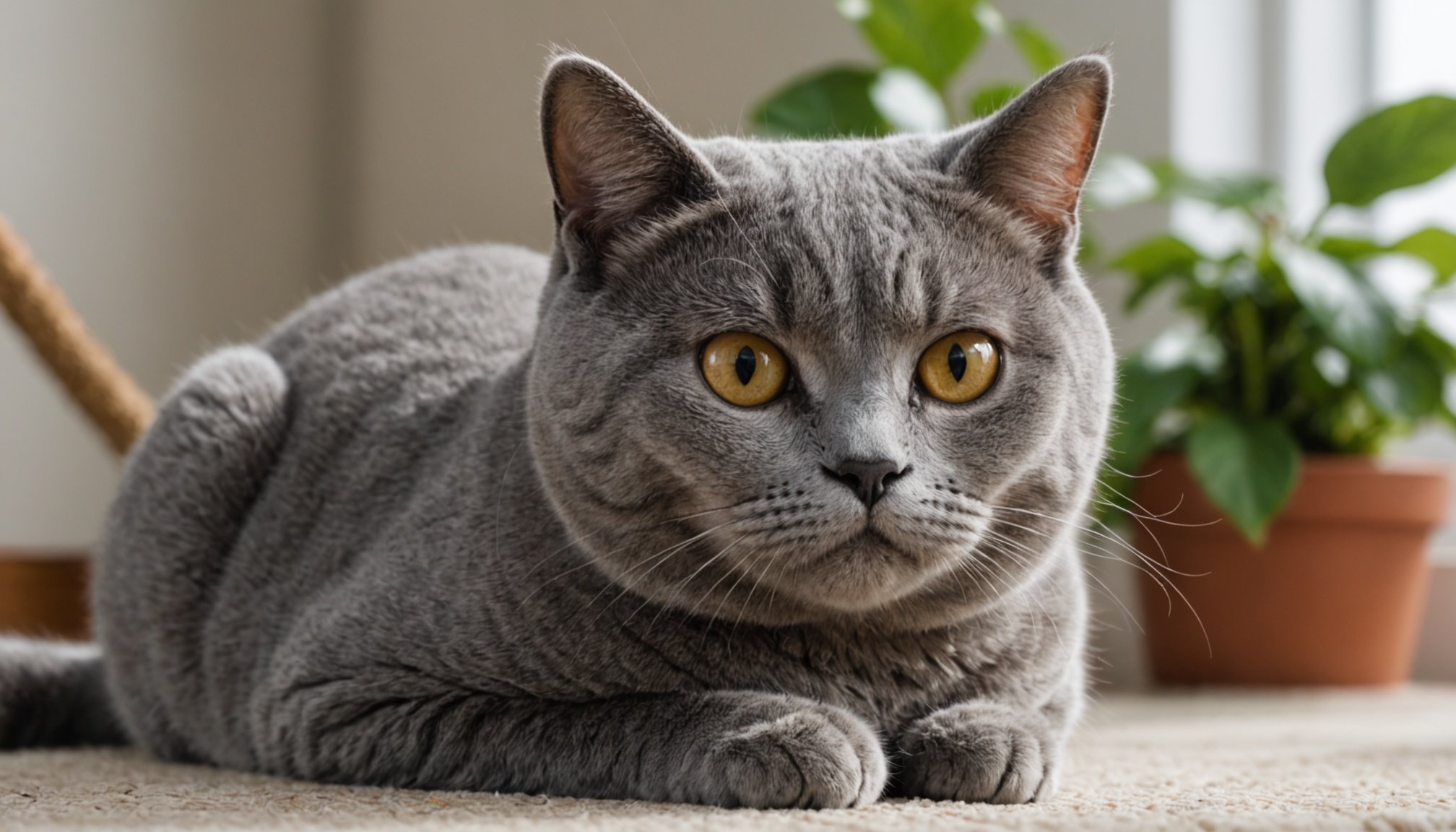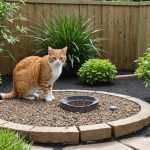Understanding Separation Anxiety in Rescued British Shorthairs
Separation anxiety is a common condition in cats, especially among rescued cats such as British Shorthairs. These felines may exhibit significant stress when left alone, manifesting in behaviors like excessive meowing, destructive activities, or improper elimination. Understanding the root causes and signs of separation anxiety in rescued cats is crucial to manage and mitigate their anxiety.
British Shorthairs are known for their placid temperament and independence. However, unique characteristics inherent to the breed can contribute to anxiety under specific circumstances. They tend to form strong bonds with their owners, making the absence of their human companions unsettling. This attachment can amplify feelings of anxiety, particularly for those with a history of being abandoned or lonely.
A lire aussi : Is a standard tropical aquarium the perfect home for your axolotl?
The background of rescued cats plays a pivotal role in their behavior and anxiety levels. Cats that have experienced trauma or abandonment may be more prone to separation anxiety. Their past experiences can lead to a heightened state of alertness or fear when confronted with the possibility of being alone. Therefore, adopting families need to provide an environment filled with consistency and patience, ensuring a stable transition for British Shorthairs into their new homes. Recognizing and addressing these needs early can alleviate anxiety and facilitate a smoother adaptation process for these gentle, loving companions.
Creating a Safe and Comfortable Environment
Creating a cat environment that acts as a fortress of safety and a haven of comfort is vital, especially for British Shorthairs. This breed, known for its dignified charm, needs structured safe spaces to flourish. Such environments help mitigate anxiety and establish a comfort zone where the cat can retreat and relax. Their environment should be designed to accommodate their natural behaviours and preferences.
Dans le meme genre : Creating an ideal vegetarian diet for your cherished guinea pig: a comprehensive guide
Key elements to include in the cat’s environment are cozy bedding, sturdy scratching posts, and access to interactive toys. These items not only provide physical comfort but also stimulate mental engagement. Scratch posts are essential to allow the British Shorthairs to indulge their natural instincts without causing damage.
Positioning these essential items strategically maximizes comfort and security. For instance, placing bedding in a quiet corner allows your cat to recharge without disturbance. Scratching posts should be in areas where the cat spends a significant amount of time, encouraging consistent use.
Implementing anxiety reduction strategies, such as having a set feeding routine, can further ease your cat into a calm state of mind. Consistency and familiarity play crucial roles in reducing stress, making your cat’s environment a sanctuary it can trust.
Gradual Desensitization Techniques
Gradual desensitization is a structured approach to help cats manage anxiety through controlled exposure. It is particularly effective for animals struggling with separation anxiety or fear-related issues.
Introduction to Gradual Desensitization
Desensitization involves exposing a cat to a stimulus in a controlled and gradual manner, allowing the animal to become accustomed to it without triggering anxiety. This process helps in managing unwanted behaviors that stem from fear or anxiety, making it an essential tool for cat owners.
Step-by-Step Desensitization Process
The desensitization process typically begins with short, non-threatening encounters with the stimulus. Each exposure is slightly increased in intensity or duration over time. Techniques include using gradual exposure to familiarise the cat with being alone. Start by leaving the room for just a few seconds and gradually increase the time as the cat becomes more comfortable.
Measuring Progress
Track how your cat reacts during each session to ensure an optimal pace. Techniques for measuring progress involve observing the cat’s body language and stress signals. The importance of monitoring responses cannot be understated as it aids in adjusting the strategy. Tailor the process based on individual cat reactions to ensure the technique is as effective as possible.
Engaging Enrichment Activities
Enrichment is essential for the mental stimulation of British Shorthairs. These cats thrive on interactive toys and activities that prevent anxiety, keeping them relaxed and content. Incorporating a variety of playthings into their daily routine not only cheers them up but also strengthens their bond with their human companions.
Role of Enrichment in Reducing Anxiety
Using cat enrichment techniques significantly curtails anxiety. Regular engagement with toys that stimulate their natural hunting instincts can help them remain balanced. Activities that mimic prey movements or puzzles that reward treats keep these intelligent cats focused and relaxed, minimizing stress.
Types of Toys and Activities
When selecting toys for British Shorthairs, focus on puzzles, feather teasers, and motorized mice to create a stimulating environment. Interactive toys that require problem-solving skills can occupy their minds, creating a playful atmosphere that resonates with their inquisitive nature. Rotating toys ensures sustained engagement and prevents boredom.
Incorporating Playtime into Daily Routines
Consistency in playtime is beneficial. Set aside specific times for play, blending these sessions seamlessly into daily routines. Offer diverse interactive toys and hands-on activities to cater to their preferences. By doing so, you meet their enrichment needs, fostering a happier, healthier cat.
Building a Strong Bond with Your Cat
Establishing a strong cat-owner relationship requires dedicated bonding techniques and understanding the significance of trust. Trust is critical in alleviating anxiety and fostering a sense of security in your feline companion. When a cat feels secure, it is more likely to approach you, respond positively to your presence, and indulge in affectionate interactions, which enhances the overall quality of the relationship.
Engaging in various activities can significantly strengthen the bond with your cat. Regular playtime using toys that mimic prey can stimulate a cat’s natural hunting instincts while also providing quality interaction with the owner. Grooming sessions can also be beneficial, as many cats find the experience soothing and bonding.
Another important aspect is the implementation of routines and consistency. Cats thrive on predictability, which means regular feeding times and consistent interaction times can reassure your cat and build trust. Consistency in communication, such as using the same tone and gestures, also helps in reinforcing the bond.
Implementing these techniques effectively creates a nurturing environment that strengthens the bond, reduces any potential anxiety, and benefits both the owner and the cat. Ultimately, a harmonious relationship built on trust and routine enriches the lives of both parties and creates a joyful companionship.
Utilizing Professional Resources
Understanding when to seek professional help for your pet’s anxiety can make a significant difference in their wellbeing. If your pet exhibits persistent signs of stress or anxiety, such as excessive barking, destructive behaviour, or avoidance, it may be time to consult a professional. Pet behaviorists are trained to assess and modify your pet’s behavior.
Behavioral Therapy Options
Behavioral therapy often begins with a thorough assessment by a behaviorist to identify the root cause of anxiety. This may involve altering the pet’s environment or creating a structured routine. Techniques could include desensitisation, where pets are gradually exposed to stressors in a controlled setting. Pet therapy, including both play therapy and relaxation techniques, can help reduce anxiety symptoms.
You may also consider consulting with your veterinarian, who can provide invaluable insights and potentially recommend further resources. A veterinarian could suggest medical interventions if necessary, such as anxiety-reducing medication or nutritional supplements tailored to ease stress.
Consulting with a veterinarian not only aids in anxiety management but also ensures that any underlying health issues are addressed. By utilizing these resources, pet owners can implement a structured and informed approach to tackling pet anxiety, ultimately leading to happier and healthier lives for their animal companions.
Monitoring and Adjusting Your Approach
Understanding and adapting to your pet’s needs requires meticulous behavior monitoring. Observing your pet’s actions and reactions over time is essential to gauge behavioral changes accurately. This insight allows you to tailor adjustment strategies effectively, ensuring that their needs and behaviors are met with the proper response.
One key method of behavior monitoring is to maintain a detailed log of any changes or patterns you notice. This could include noting when specific behaviors occur and identifying any triggers. By doing so, you gain valuable data that informs your adjustment strategies.
When making adjustments, it’s crucial to assess the effectiveness of these strategies. If a particular approach doesn’t yield the desired results, don’t hesitate to make necessary changes. Flexibility and adaptability are your allies. Employ a variety of strategies, alternating them based on what proves effective.
The role of ongoing support can’t be overstated. After initial changes are implemented, continuous support helps solidify new behaviors. This involves being patient and maintaining consistency. Often, behavioral transformations require time to manifest fully. Be patient and steady in applying these strategies, as rushing the process might undermine your efforts. Patience and consistency truly form the backbone of comprehensive pet care and behavioral management.











